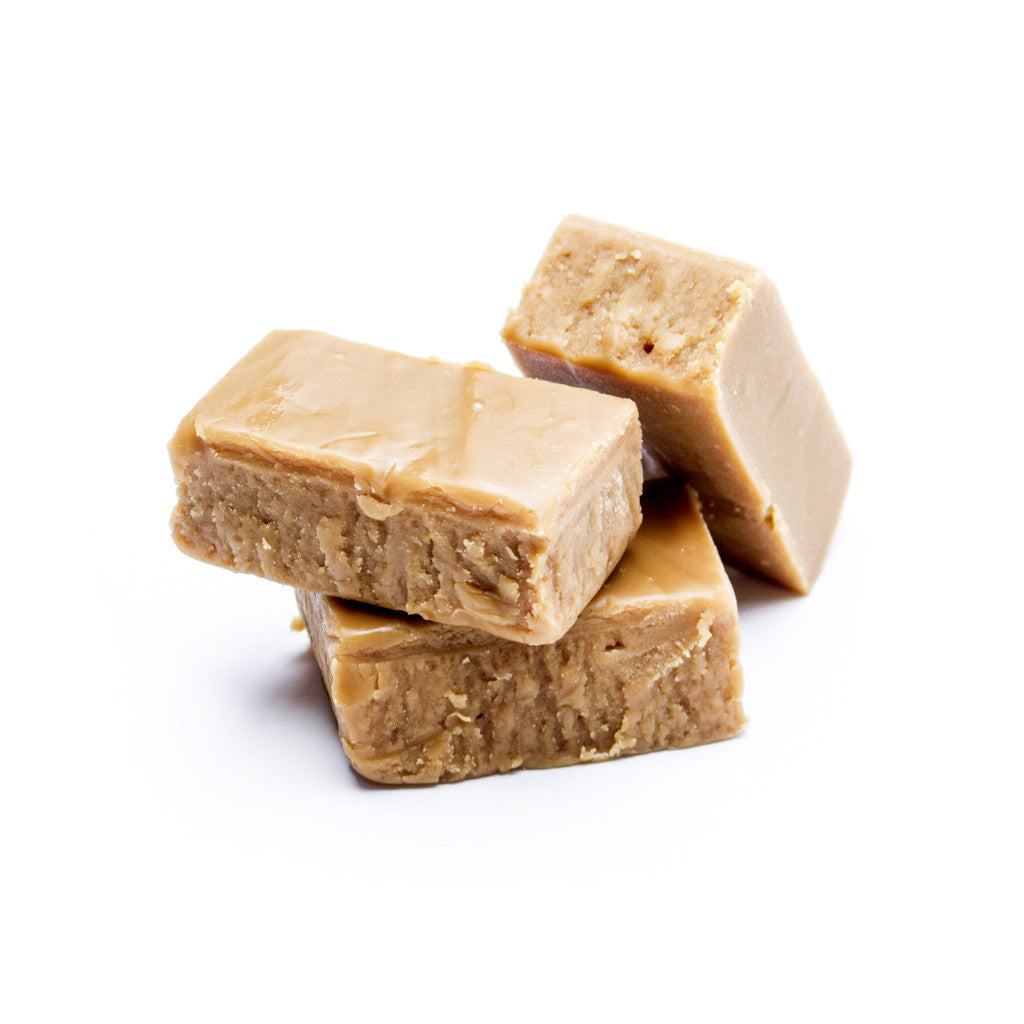
The Ultimate Guide to Fudge

Everything you wanted to know about making amazing homemade fudge but were too frightened to ask....
Hints, Tips and Fudge Troubleshooting are all included
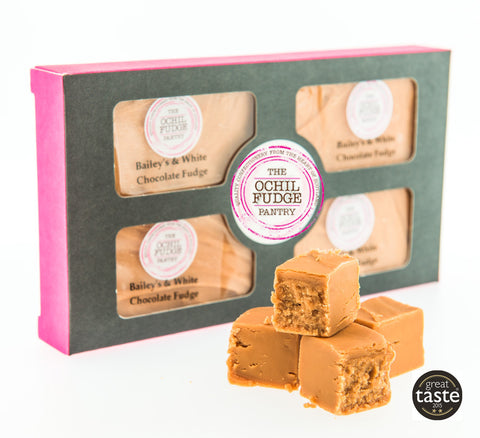
From “who comes up with the ideas for flavours?” or “how do you come up with the ideas for all the different flavours?” to “Do you really make all this yourselves?” we will answer all these questions and maybe a little bit more. An honest, ‘pull the curtains back with the big light on’ view of The Ochil Fudge Pantry and the wonderful world of Fudge. In true Ochil Fudge style though we want to make this as interactive as possible so if you have a question ask away. Just like everything about us, it’s just quite simple.
Scroll to the bottom of this blog for fudge recipes or click HERE to buy some Great Taste Award Winning Handcrafted Fudge made by The Ochil Fudge Pantry
Let’s start with us….
Who is The Ochil Fudge Pantry and some of you might be asking “what makes us qualified to write The Ultimate Guide to Fudge?” We (Susan and Angie) have been living and breathing Fudge and Scottish Tablet since late 2010. Whilst we made occasional batches before that we were never completely submerged in the wonderful world of fudge until we started The Ochil Fudge Pantry. Now everything in life will, in one form or another rotate around fudge (and Scottish Tablet).
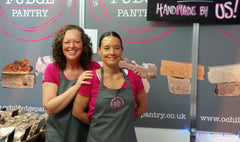

We don’t know absolutely everything about this or indeed anything, thankfully. After all, how boring would we be if there was nothing left to learn? What we do have though, is a wealth of fudge related experience and insight which could be fun to share. Our fudge team also includes the amazing Amy and the intrepid Eileen and together we have one rather large life of fudge.
So what is Fudge and what is good Fudge?
Fudge comes is many shapes, forms, flavours, sweetness levels and even textures. Many people reckon Fudge originates from a batch of toffee that went wrong at a college in the USA in the 19th century and that might be absolutely true for the US whipping cream-style fudges (Sugar, Whipping Cream and glucose syrups) which many people enjoy. Another theory is that Fudge, especially the more traditional butter-based British Fudge (Sugar, Condensed Milk and Butter), has been a development from sweets from such as Scottish Tablet and Lancashire Crumble which were being made in regions of the as early as the beginning of the 18th century, as both have the same sort of ingredients. Fudge has loads and loads of different variations and if you do a search for a great fudge recipe you will find literally hundreds of thousands of varying recipes. It’s fair to say it’s almost a style of sweet or candy rather one very specific thing. The trick with fudge is finding the right type of fudge you enjoy. So what is a good fudge? Well it’s exactly like wine. It’s the one you like the taste of. It’s as simple as that. The one thing that fudge isn’t and shouldn’t be is pretentious. In this guide we’ve even included a couple of basic fudge recipes for you to try out to see what you prefer.

What makes fudge crumbly?
At the Ochil Fudge Pantry we produce both Butter rich fudge and Cream rich fudge. Our Butter rich fudges are slightly crumbly in texture and less sweet than many fudges simply because they have a high ratio of butter to sugar. This also ensures you’ll get a full flavour that melts in the mouth. It just melts and is NEVER chewy. So if this is the type of fudge you enjoy then we could quite possibly make the best fudge you have ever tasted ;)
Is all Fudge Gluten-Free?
Everything we make is gluten-free and we lab test our products for your safety and peace of mind. We use old fashioned recipes which are naturally free from Gluten and our production kitchen is an entirely Gluten-Free environment. Not all fudge is gluten-free though, beware as many ‘chewier’ fudges contain Glucose Syrup derived from Barley or Glycerin which can also be derived from a non gluten-free base. If you are in any doubt check out the packaging or ask the people who make it.
How easy is it to make fudge at home?
Anyone and I do mean anyone can make fudge. However, not everyone can make good fudge but again this all comes down to taste.
What equipment do I need to make fudge at home?
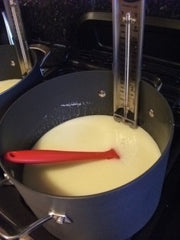
- A cooker
- A heavy-bottomed pot with high sides. Fudge boils higher than you might think.
- A wooden spoon (we use silicon but it has to be able to withstand temperatures of up to 260 degrees Fahrenheit. Trust us we have melted complete silicon spoons into fudge pots before and no it doesn’t add to the flavour)
- A parchment-lined baking tray
- A candy thermometer or a jug of cold water
- Patience and lots of it
Is a copper pan better for cooking fudge?
Certainly a copper pan is a traditional choice for cooking with any form of hot sugar however having tried a large copper pan for ourselves we couldn’t find any great benefit to the finished product in fact because the copper conducted the heat so well found it rather more temperamental to work with especially on damp, wet or particularly humid days. I have no doubt many people would disagree with our experience but a copper pan is quite a costly investment for no real discernible taste difference in our opinion.
Can you make fudge in the microwave?
You can make something sugary which some people call fudge in the microwave but would we recommend a microwave as a means of making really good fudge? The simple answer is no. The process of melting, boiling and stirring over a period of time until the mixture gets to temperature determines not only how smooth the texture of the fudge is but also its flavour. A long slow cook allows for a deep mature caramelisation of the sugar which brings the most amazing flavour to the fudge and that’s not something you aim for when engaging a microwave.
So what ingredients do you need to make fudge?
The core ingredient of any fudge is sugar. The sugar is usually mixed with some form of dairy products which might take the form of heavy cream, condensed Milk, evaporated Milk, clotted Cream, whipping cream or butter and in many cases it’s a combination of one or more of these dairy bases. Many people add a little sugar syrup to the mix as well to enable make it harder for the sugar to recrystallize after the cooking process. You can also add any manner of flavours or ingredients to the fudge to make it personal to your taste. This could be anything from nuts to alcohol to even bits of candied Bacon if that was what really floated your boat. The one thing that is certain is that whatever flavour of fudge you want to make it really only is limited by your imagination! So far we’ve made 129 different flavours of fudge and we’ve only scratched the surface. Imaginative or a case of attention deficit? You decide.
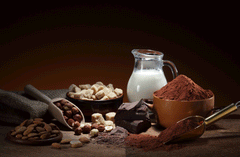
It is worth noting that Evaporated Milk does in most cases contain sulphites which have been reported in some cases to cause stomach irritation.
What is the soft ball fudge temperature test?
In lots of sites that talk about fudge recipe’s they mention the fudge soft ball test. It all sounds very scientific but the reality is that it is a very basic unscientific test which doesn’t always guarantee the exact fudge consistency and texture that you might be after.
The test is simply to drop a very small amount of your boiling mixture into a small glass half-filled with water. The reasoning is that if the fudge holds together and forms a ball which you can lift out and hold between your fingers then it might be ready. What this doesn’t do is allow you to precisely recreate the texture you are after next time or even accurately predict how soft or gooey the fudge will actually be once it has cooled. The only way to accurately do this is via a candy thermometer. Most recipes talk about boiling the fudge but very few give a time. The reason for this is that it does come down to lots of variables including your heat height, how your pan conducts the heat and various other elements which can be difficult to define. One thing is for sure though and that is it’s much longer than you think it will be.
Lots of fudge recipes say you need to “Beat” fudge, is that true?
Once your fudge has reached temperature and it has been removed from the heat you might think the hard work is over. The reality is that it is just beginning! Sugar’s most comfortable position to exist in, is in crystal form and even though you’ve melted your sugar and boiled the mixture to the desired temperature the sugar was to return to crystals again. Beating takes the sugar crystals and stretches them and that stops the sugar crystals reforming. In short beating your fudge will give you a much smoother texture.

Some people have come into our kitchen to work with us for a short while and been amazed at three things; 1. How long you have to beat the fudge for 2. How hard you have to beat the fudge 3. How sore their arms are the next day! The beating of the fudge will either make it or break it and in our experience, the same can be said of the fudge maker after this step!
NEVER Underestimate just how dangerous working with hot sugar can be!
Whilst you don’t need asbestos hands when making fudge you do absolutely need to be very careful and have some decent flexible protection. Fudge does spit as it boils and the hotter it gets the more any potential burn will hurt. Long sleeves and some sort of kitchen/oven gloves are a couple of simple precautions. Nude fudge making whilst filled with adrenalin and a certain air of drama may seem like a decent pastime it can also lead to some awkward questions in A&E.
But what if your fudge hasn’t turned out as you’d hoped?
Fudge Troubleshooting – Hints and Tips
OMG My fudge is grainy, what do I do? -
Don’t panic if your fudge is grainy, nothing is lost it just requires some more work. Pop the grainy fudge back into the pan along with some water and a little cream and melt the fudge back down to a liquid and re-boil it to temperature. Heat slowly to begin with and make sure the mixture goes completely smooth before bringing it to the boil.
But why did my fudge go grainy? – There are a number of reasons why the fudge was grainy. It might be that you haven’t dissolved all the sugar before boiling the fudge mixture. It could be that there just wasn’t enough fluid or fat to enable the sugar to dissolve or it might even be that the fudge wasn’t beaten long enough or hard enough. All of these factors could be the cause of grainy fudge.
Quick Cheats (aka Hints and Tips)
- If you add a teaspoon of Cream of Tartar to fudge this will inhibit the formation of crystals to a degree but please be aware THIS DOES NOT REPLACE THE BEATING PROCESS!
- Adding a little bit of fondant to a completed fudge can also add reduce the amount of time you need to beat the fudge for. Be warned though this does in our opinion give the fudge a much sweeter high note.
- Some people use an electric beater instead of hand beating. The risk you have with any sort of mechanical beating is that it is really easy to overbeat fudge and that in itself can give the fudge a grainier texture on the tongue!
OMG My Fudge hasn’t set! What happened?
– Well the good news is that you have probably made an amazing thick fudge sauce! You could simply pour it over ice cream and enjoy. If you wanted it just a little thinner for fudge sauce simply add some heavy cream and just reheat until it has all melted through. Everyone in the family would love you and you need never admit it was ever intended to be anything other than fudge sauce!
But really why did my fudge not set? – The most likely explanation is that your fudge didn’t quite reach the full temperature it needed to be. If the mixture only ever reaches 110 or 112 degrees celcius it will always be soft. Our advice would be to buy a candy thermometer and take the guesswork out of the fudge making. The second reason although a tad more likely is that you might have too high a liquid to sugar ration in your fudge ingredients.
Does the weather on the day I make the fudge really make a difference?
- the short answer to this question is YES. As ridiculous as this sounds it really does make a difference. The damper a day with an increased humidity level will mean the fudge will take longer to boil, it will boil higher in the pan and it will be a little softer set when it’s left to cool.
Ironically it’s normally on a damp wet Saturday afternoon most people would be grabbed by the urge to make fudge! A cool, dry day with low humidity is actually the best days to make fudge. But what if the urge is so great you can’t resist?? The easy answer is to boil the fudge to 0.5 degrees higher than your usual temperature and that will compensate for the weather a little. Also, use a slightly lower heat of the pan base and be prepared for the whole exercise to take just a little longer. This reduces the risk of the fudge boiling over as well.
So how unhealthy is fudge really?
We won’t be shy about it and dress it up as something it isn’t and hide lots of sugar and saturated fat under the guise of a “healthy” alternative and take it next to a picture of a hiking boot or a mountain bike. Fudge has a reasonably high fat content and a very high sugar content but sometimes in life you just need a treat. There are far worse things you could do to your body than have a little bit of fudge.
So what about these recipes? We’ll be adding a variety of recipes to this blog in the coming months and we hope to cover a variety of things including Dairy Free Fudge and even Microwavable Fudge! Keep checking our blog for updates and we will do our very best not to disappoint.
Fancy buying fudge instead of making it?
Sometimes you just want your fudge now. Delicious and hassle-free. Luckily, we provide over 25 flavours of fudge and tablet all year round!
comments ( 8 )
Crumbly fudge is sometimes the result of overbeating. You must pour it in pan to harden while it still has a bit of gloss.
I am a first time maker of fudge. My first batch did not set and was grainy. I believe I did not bring it to a high enough temp and I did not mix it after i poured it in the pan to set. So, I will try again but I am interested in your basic recipe. : ) Have a great day.
I went to a Memorial Day event in Colorado Springs, CO that starts the summer in style. I had purchased a block of Maple fudge. I enjoyed it so much, I purchased more today after eating the block yesterday. Now my quest is I am hooked on it, and wanting to learn how to make the best fudge. Lots of practice to come up with the best product. Just my learning and experience from the taste.
Thanks for all the excellent information. My Divinity Fudge, chocolate and brown sugar fudge all turned out beautifully.
thanks again for sharing.

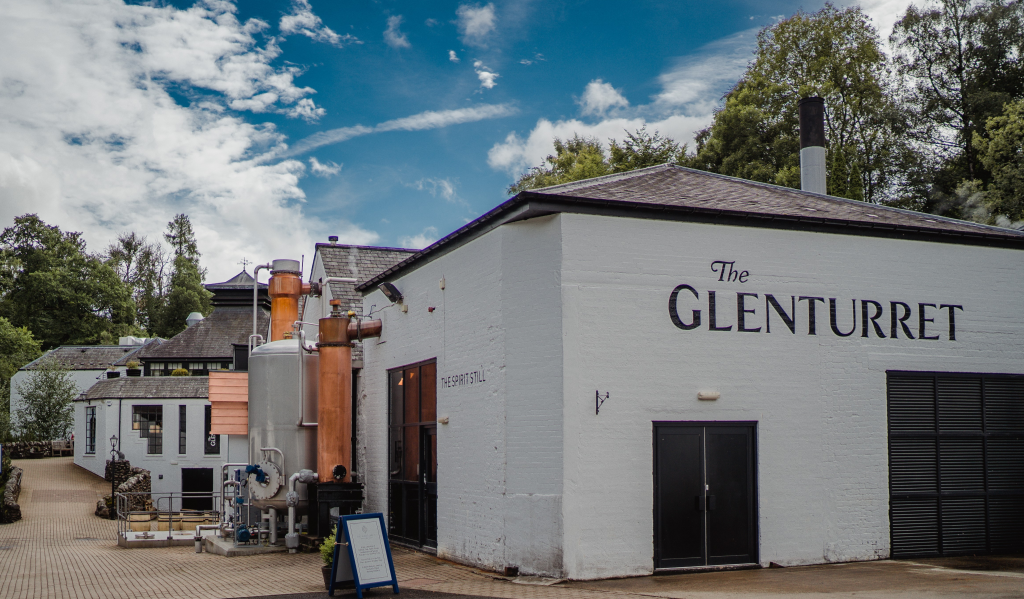
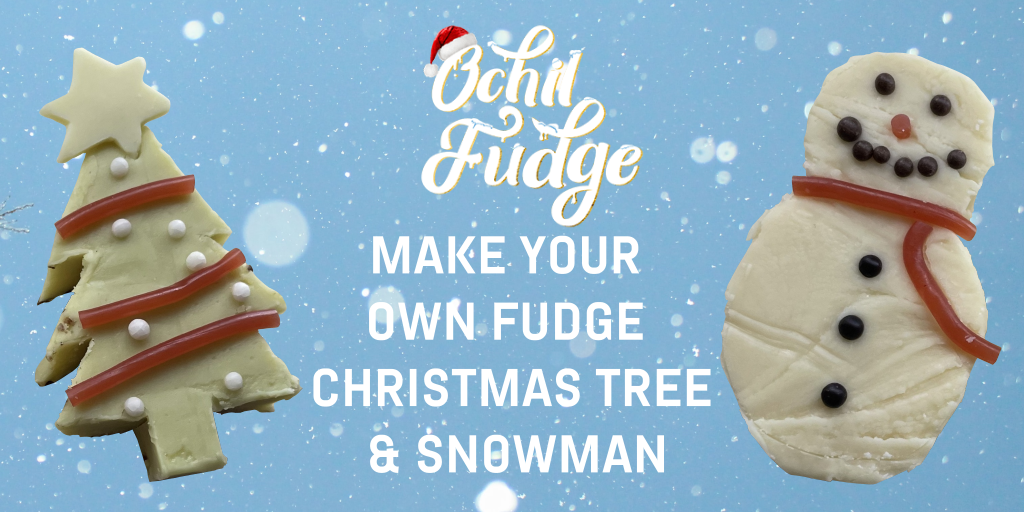

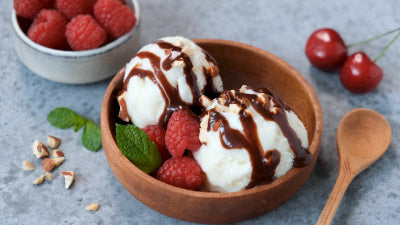

I’ve been making fudge for years and it is always perfect. But… I just made fudge tastes great texture is great. After it has set and I have removed from the pan I find specks of butter on the bottom of the fudge. What would cause this? Thank you